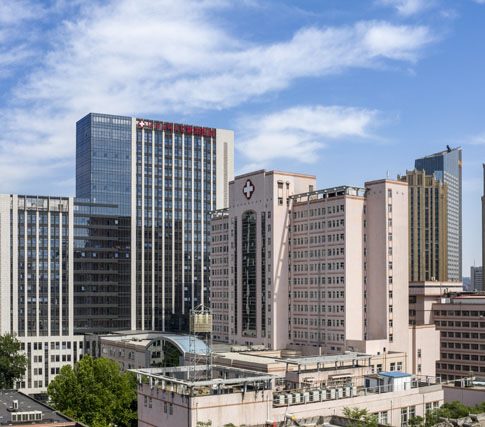Hebei Medical University, Hebei, China
About Hospital
Hebei Medical University Hospital, Hebei
Hebei Medical University (HMU), formerly known as Beiyang Medical School, is among the top universities in Hebei Province. Established in 1894 by Governor Li Hongzhang in Tianjin, it was China’s first government-established western medical school. Renamed Zhili Public Medical College in 1912, it began admitting undergraduates in 1912 and moved to Baoding in 1915. The college closed during the Second World War but reopened in 1946 and was renamed Hebei Medical College in 1949. It moved to Shijiazhuang in 1958 and merged with two other colleges in 1995 to become Hebei Medical University. Endorsed by the Ministry of Education, National Health and Family Planning Commission, and Hebei Province in 2016, HMU aims to become a high-level medical university with a distinctive focus. With a motto of “Benevolence, Erudition, Integrity, and Flexibility,” and an emphasis on a student-centered approach, HMU offers 18 undergraduate majors across 14 colleges. It has four national-level and four provincial-level characteristic courses and enrolls 11,807 students. HMU offers post-doctoral programs, doctoral programs, and master’s programs in various disciplines and has a robust medical education system. The university boasts over 15,000 teaching and administrative staff, including renowned professors and experts. It operates five directly affiliated hospitals with 9,139 beds and collaborates with other hospitals and clinical practice sites. HMU is a hub for medical education, healthcare, and research in Hebei Province, with key disciplines, laboratories, and research institutes. Internationally, HMU has established partnerships with medical schools and research institutes in 12 countries and hosts over 400 international students. Additionally, it prioritizes community service and has signed 43 cooperative agreements with enterprises and institutions for education, research, and social services.
Team and Specialities
- Oncology
- Cardiology
- Neurology
- Nephrology
- Orthopedics
- Opthalmology
- ENT
- Urology
- Gynecology
- Gastroenterology
- Dentistry
- Infectious disease
Infrastructure
Hebei university has two hospital areas, covering an area of 210 mu and a construction area of 250,000 square meters. It opens 2420 beds (1600 beds in headquarter, 820 beds in east area), owns 4457 employee, 64 clinical and medical departments that includes all clinical function departments, owns 1657 large medical equipments with unit price of more than one hundred thousand RMB such as PET/CT, high-grade linear accelerators, nuclear magnetic resonance imaging systems, multi-spiral CT scanners, and fixed assets of 2.011 billion RMB.
Staff structure: there are 571 senior professional technicians, including 18 experts enjoying the State Council special allowance, 13 provincial excellent experts, 28 young and middle-aged experts with outstanding contributions in Hebei province, 255 postgraduate supervisors and 232 doctoral personnel.
Location
Hospital Address
Hebei University Hospital,
NO.12, JianKang Road, Shijiazhuang, Hebei Province, PR China
Facilities
Profession features: characterized by diagnosis and treatment of tumor, the 4th hospital has formed a comprehensive treatment system of surgery, radiotherapy, chemotherapy, immunotherapy and integrated Chinese and Western medicines, especially has completed 36,000 cases in the diagnosis and treatment of esophageal cancer so far, which makes the hospital with the largest number of completed surgical cases of this disease in the world and reach domestic advanced level.
Medical work: the hospital has a complete set of departments that diagnoses and treats all systemic diseases such as medical, surgical, gynecological, and pediatric diseases, etc. In recent years, on the basis of constantly improving the ability of standardized diagnosis and treatment of common diseases and frequently-occurring diseases, the hospital has comprehensively improved the ability of early diagnosis, comprehensive intervention and individualized comprehensive treatment of diseases, the ability of handling with critically ill and difficult patients. At present, more than 30 provincial leading technical operations such as minimally invasive surgeries, interventional treatments, cardiac surgeries and in vitro fertilization are carried out every year. There are 1.32 million outpatient visits, 131,300 inpatient visits and 35,300 surgeries per year.
